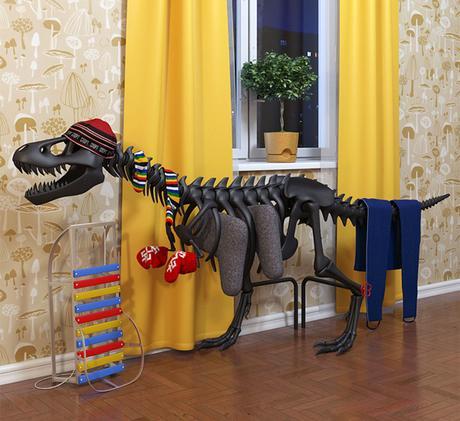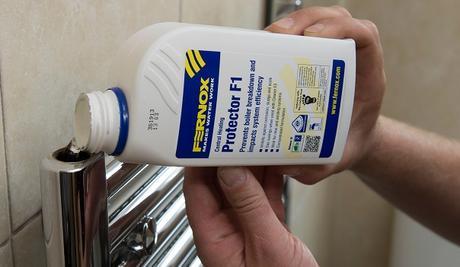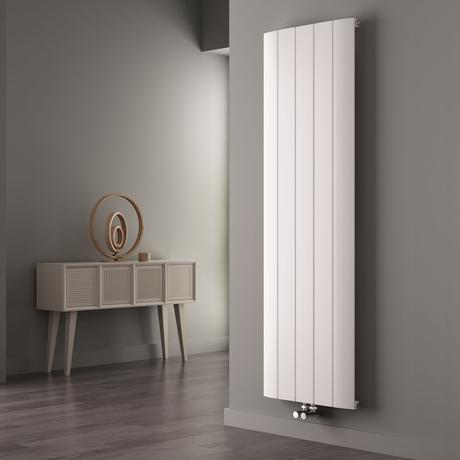Understanding Aluminium Radiators
These days, there are lots of different materials that radiators are made from – steel, cast iron, stone and even wood (chocolate teapot anyone?) are readily available for you to buy if you know where to look.
But right now aluminium radiators are all the rage, so I thought I’d have a look into why you should seriously consider paying that little bit extra to get your hands on one.
This is everything you need to know about aluminium radiators.
The Most Abundant Metal On Earth
Aluminium is the third most abundant element to be found anywhere on the face of the earth, and the most abundant metal there is in the planet’s crust.
Right now, under your feet, about 8% of the Earth’s top layer is made up of the stuff.
Despite this fact, you’ll probably struggle to find it if you went looking for it as it’s normally found combined with a load of other different minerals (270 to be exact), primarily found in the rock Bauxite.

Aluminium is well known for its low density and ability to resist corrosion, which is why the likes of drinks cans, planes and radiators are made from the stuff.
As its super cheap to produce – and despite the prevalence of aluminium radiators being used elsewhere in Europe – steel has been the most popular material for radiator construction in the UK since the 1970s, but that’s beginning to change as more and more British consumers are turning to aluminum.
Steel may be easier to produce than aluminum – when you factor in the cost of extracting it from Bauxite – but in the grand scheme of things, the benefits of aluminium radiators far outweigh the initial cost of purchasing one, and there are a few other things to bear in mind too, each of which could save you cash and transform your home’s heating.
What are the Benefits of Aluminium Radiators?
Though they will normally cost a little more to buy than steel radiators, across Europe, aluminum has been widely used in the construction of radiators for quite a while now, despite the materials’ effect on radiator prices.
And when you look at the benefits of investing in aluminium radiators, it’s easy to see why they are gaining a new following here in the UK.
This is mainly down to aluminum being a superb conductor of heat – having an emissivity level that is virtually five times that of a steel alternative.
That very fact alone means aluminum is perfectly suited to radiator construction, as the radiators don’t have to be on as long in order to reach their maximum temperature.

If you consider that an aluminium radiator will also require less water to function, then it all adds up to lower heating costs, a more efficient heating system and more cash in your pocket.
Another important factor to consider is that aluminum radiators are much lighter than steel or cast iron, meaning that they are suitable for installation on all types of wall – both external and internal, respectively – so they can heat up pretty much any space.
The cost of installation could also be affected by this too, as they are quicker to get on the wall and take less man power to lift.
Lastly, there is the matter of style.
As you probably already know, the days of being limited with regards to design, color and material are over. Take one look at the Best Heating store and you’ll see radiators of all shapes, sizes and colours, some in rather futuristic designs.
Aluminium radiators scream style and good looks and have been designed to sit in harmony with most surroundings.
When you consider all of these different points, it’s pretty easy to see why aluminium radiators are becoming increasingly popular amongst UK consumers.
Aluminium – The Environmentally Friendly Radiator

As well as being better at heating up and using less water, there are other environmental benefits of aluminium radiators too.
The biggest of these is that they’re made from a recycled material.
So next time you feed your dog, have a can of coke or crack open a tin of beans, just think, that can in your hand may well end up on the wall of somebody’s home someday in the shape of a radiator.
Their low water content also means that they can afford to be a little smaller, which can be really useful when using them alongside a low-temperature heating system (like a ground source heat pump) because there’s no need for big over-sized radiators to compensate for the low water temperature.
Why Not Make All Radiators From Aluminium?
Well, that would be a good idea, but there’s still not really a huge call for it in the UK market, despite it becoming a more popular and common manufacturing material.
We tend to like our radiators to retain their heat for a long period of time, but as quick as aluminum heats up, they are equally adept at cooling down.
Because of this, the UK consumer tends to opt for steel or cast iron – both of which retain their heat for much longer than aluminum.

That said, aluminium’s lightweight structure means it can be manipulated into a variety of shapes, quite readily, without affecting its strength.
So if you’re thinking of trying to get your hands on a T-Rex radiator or something even more unusual, then it may be worth looking into aluminum.
How to Care for Aluminium Radiators
Though you may have thought otherwise, there isn’t really anything special that you need to do if you have an aluminium radiator.
They work in the same way as steel and cast iron, though they won’t hold on to their heat as long, they’ll get hotter quicker and they weigh less, so all-in-all they’re great value for money.
You may have heard that there is an added risk of corrosion in adding an aluminium radiator to a heating system that contains steel or cast iron radiators, but you needn’t worry.

Adrian Dyer – Technical boffin at Fernox (inhibitor specialists) had this to say on the subject: “It’s a building regulation requirement that all inhibitors work with mixed metals. This means that adding standard corrosion inhibitor is perfectly fine for the system if you have one or more aluminium radiators.“
So it’s simply a case of adding the inhibitor that you would have already put in, no need for any special treatments, just plumb and play you might say, thanks for that Adrian.
Aluminium Radiators at Best Heating
Lightweight and durable, we have a growing collection of aluminium radiators here at Best Heating; in fact, we’ve just introduced a new range courtesy of home heating specialists, Milano.
Discover the new Milano Skye range of aluminum radiators and add a little lightweight style to your home heating. Believe me, your home, your bank account and the planet will look a whole lot different when you do.

The Skye range also features centrally located valve inlets that help to minimise the space taken up by the radiator.
This is another design that has been popular in Europe since the late 90’s – but one that (somewhat strangely) has only begun to catch on over here in the last couple of years.
To discover more about how middle connection radiators are a little different, watch this video.
Pro’s & Con’s of Aluminium Radiators
PRO’s
- Conductivity – Aluminium radiators respond very quickly to a change in temperature. So if you turn your heating up, an aluminum radiator will respond almost instantly, giving you more control over the level of comfort in your home. Perfect if you’re falling out with your partner about the level of heating!
- Efficiency – With little water content compared to steel radiators, aluminum will help to bring the cost of heating your home down.
- High Quality – Aluminium is a non-corrosive material, so you can look forward to many years of high-quality heating.
- Versatile – Available in both long, tall, short and slim, aluminum radiators are great for adding a stylish touch to your home heating.
- Environmentally friendly – Aluminium radiators are made from a widely recycled material and once they have served their purpose, could easily be transformed into something just as useful.
CON’s
- Quick to cool down – Unlike steel and cast iron, aluminum radiators won’t hold on to their heat for as long. Though this can be advantageous when you have a sudden change in weather and need your room to cool down quickly.
- Just one isn’t enough – adding just a single aluminum radiator to your heating system could increase the chance of corrosion occurring, as introducing a different metal into the circuit can often change the chemical make-up of the water. Therefore, if you aren’t changing every radiator in the loop, it’s important to buy the correct radiator inhibitor.
- Cost – despite the increased popularity of the material, an aluminum radiator is going to cost more in the first instance, but you’re sure to make that back over the lifetime of the system, so it’s not all bad news.
What Do You Think Of Aluminium Radiators?
If you’ve bought an aluminium radiator, either from Best Heating or elsewhere, why not let us know what you think about it.
Did it reduce your bills? Has it done what you expected? Are you happy with it?
Maybe you don’t like it and wish you’d bought something else.

Either way, leave us a comment below or get in touch on Facebook, Twitter or Google+ to let us know.
Stay Safe & Happy Heating.

